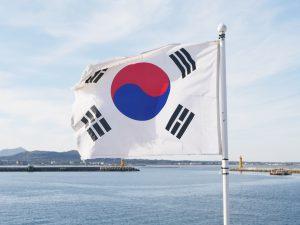More consolidations in Asian container sector

Three big Japanese carriers – Nippon Yusen Kabushiki Kaisha (NYK), Mitsui OSK Lines (MOL) and Kawasaki Kisen Kaisha (K Line) announced their container business merger in later half of 2016. The $ 2.9 billion Ocean Network Express with capacity of 1.4 million TEU was born. Capacity equals approx. 7 % of global TEU capacity. According to original schedule, new entity will start its operation on the first day of April 2018.
Cooperation between carriers has been around for a long time already. We have already gotten used to alliances as a new norm, but now Japanese have taken cooperation one step further. Global economy and trade volumes don’t seem to provide enough traffic for everybody, while at the same time overcapacity is pressuring the freight rates. Carriers have no choice but to eliminate overlapping operations with each other to stay profitable.
Chinese COSCO has a key role to play in recent One-Belt-One-Road initiative and thus seems to be immune for the pressure of cutting cost and seeking cooperation. Main objective for COSCO is to provide solid connection for exporters in main land China and investing on infrastructure in key locations globally (such as Piraeus port in Greece).
In South-Korea the liner business is more decentralized than in Japan or in China. At least until now. Realities may force Koreans to merge their businesses especially now in the aftermath of the collapse of Hanjin Shipping: first step was taken when 14 Korean shipping companies signed in for loose national collaboration in the end of last year (2017). Cutting overlapping operations, sharing cargo space, etc. Small actions here and there, nothing major.
However, in March 2018 two members of that collaboration, Heung-A Shipping (47,000 TEU) and Sinokor Merchant Marine (55,000 TEU) have decided to merge their container shipping businesses to boost competitiveness on the global stage, in a move like the one done by Japan’s NYK, MOL and K Line.
The trend of increasing cooperation in liner shipping is obvious. Costs have to be reduced and example shown by Japanese carriers seem to have opened the gates for more aggressive approach on cost-cutting. It remains to be seen if other carriers will follow this example or if alliances are seen to be enough cooperation for now.
About Author

Tuomo Keltto
Tuomo Keltto is a logistics engineer who continued his studies in Seoul, South Korea. He studied at the Korean Government scholarship for a Master's degree in international trade and logistics. Now he is back in Finland and he works at Neste in Porvoo. - He has previously been in Steveco Hietanen for three summers as a temporary stevedore and as a foreman for one summer.
